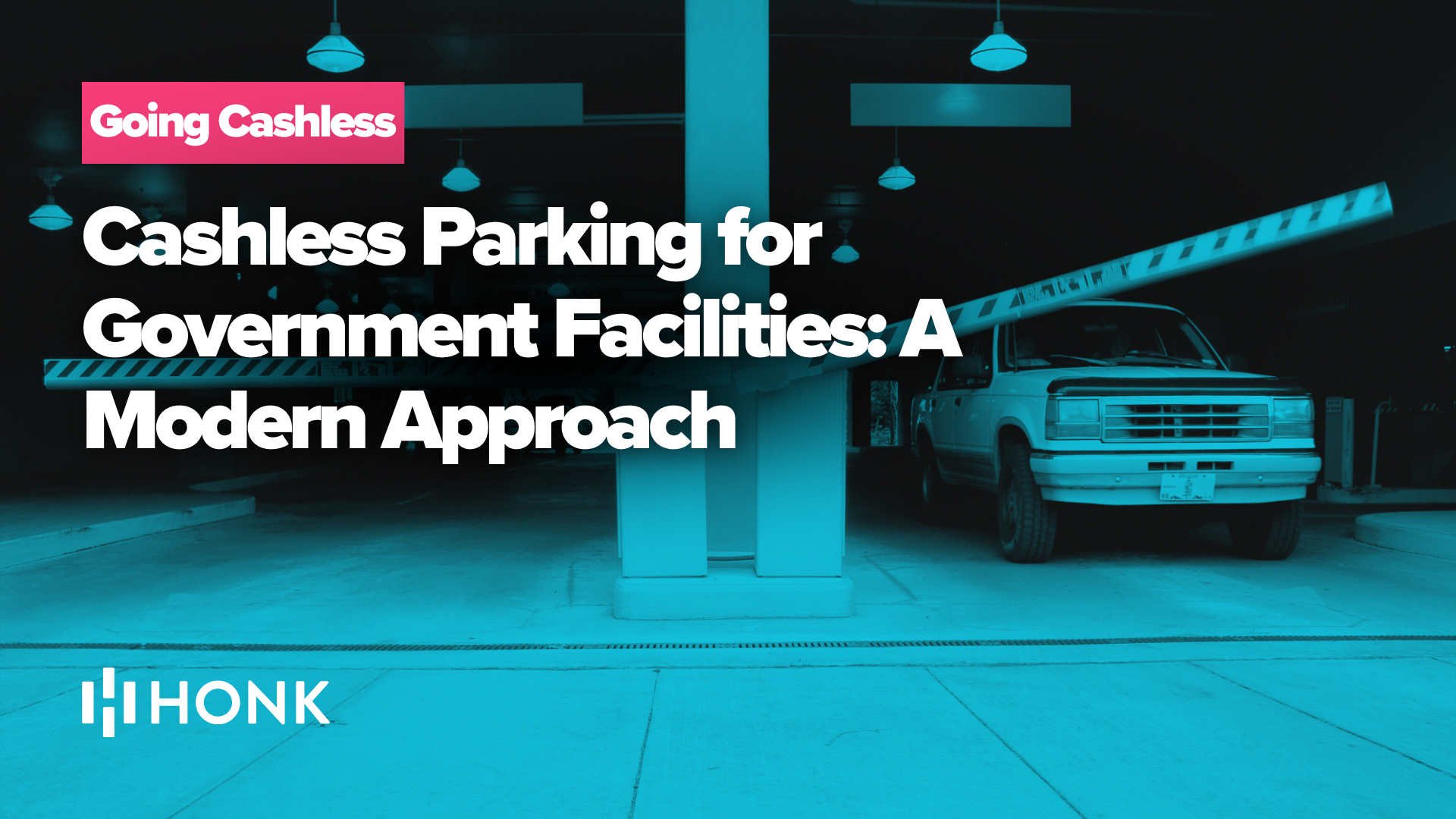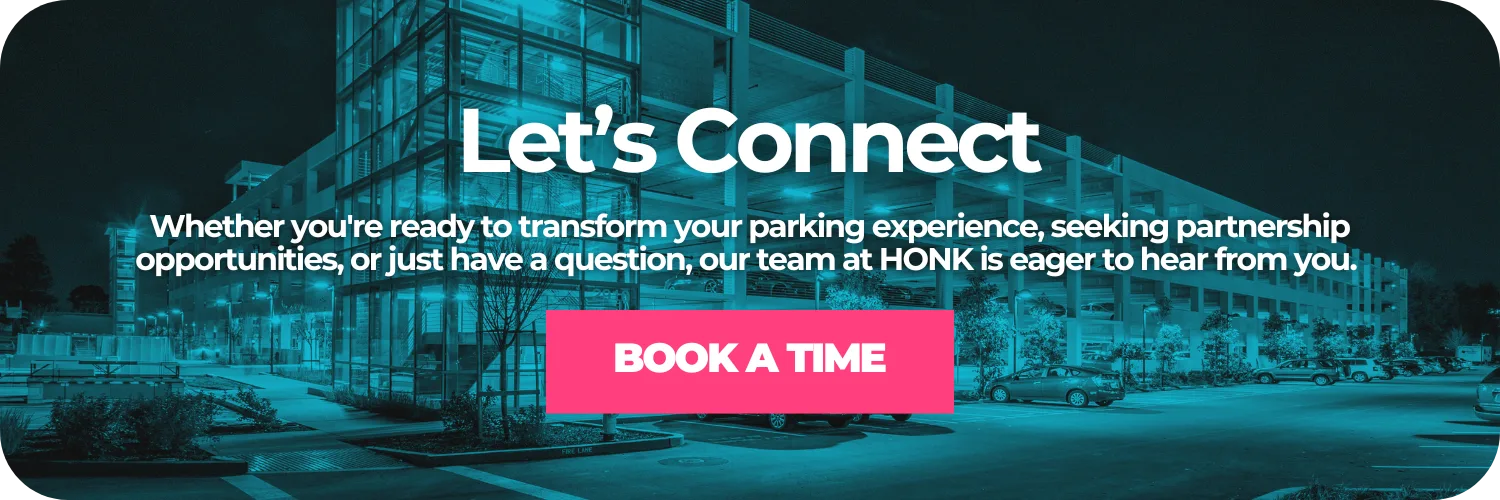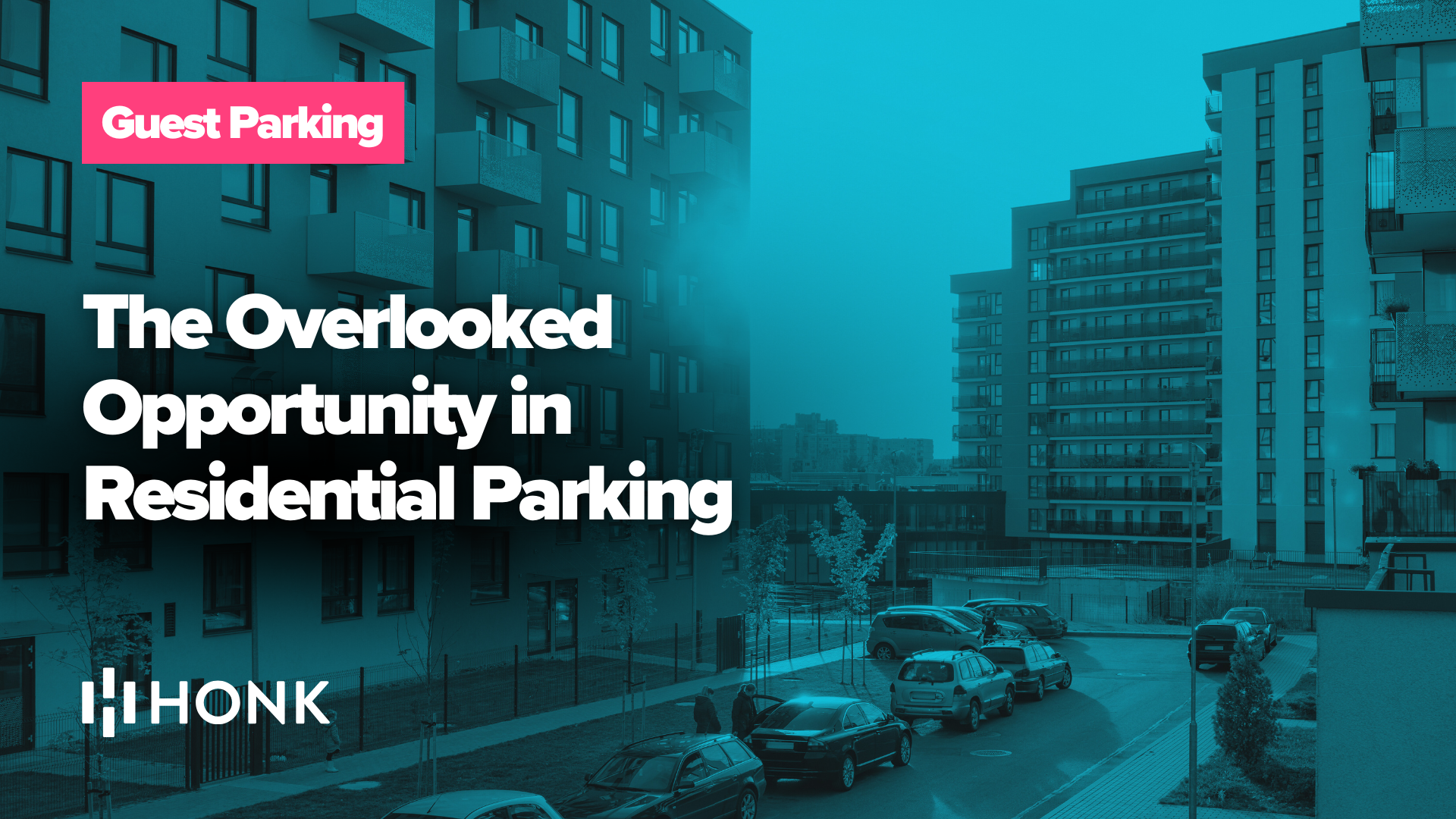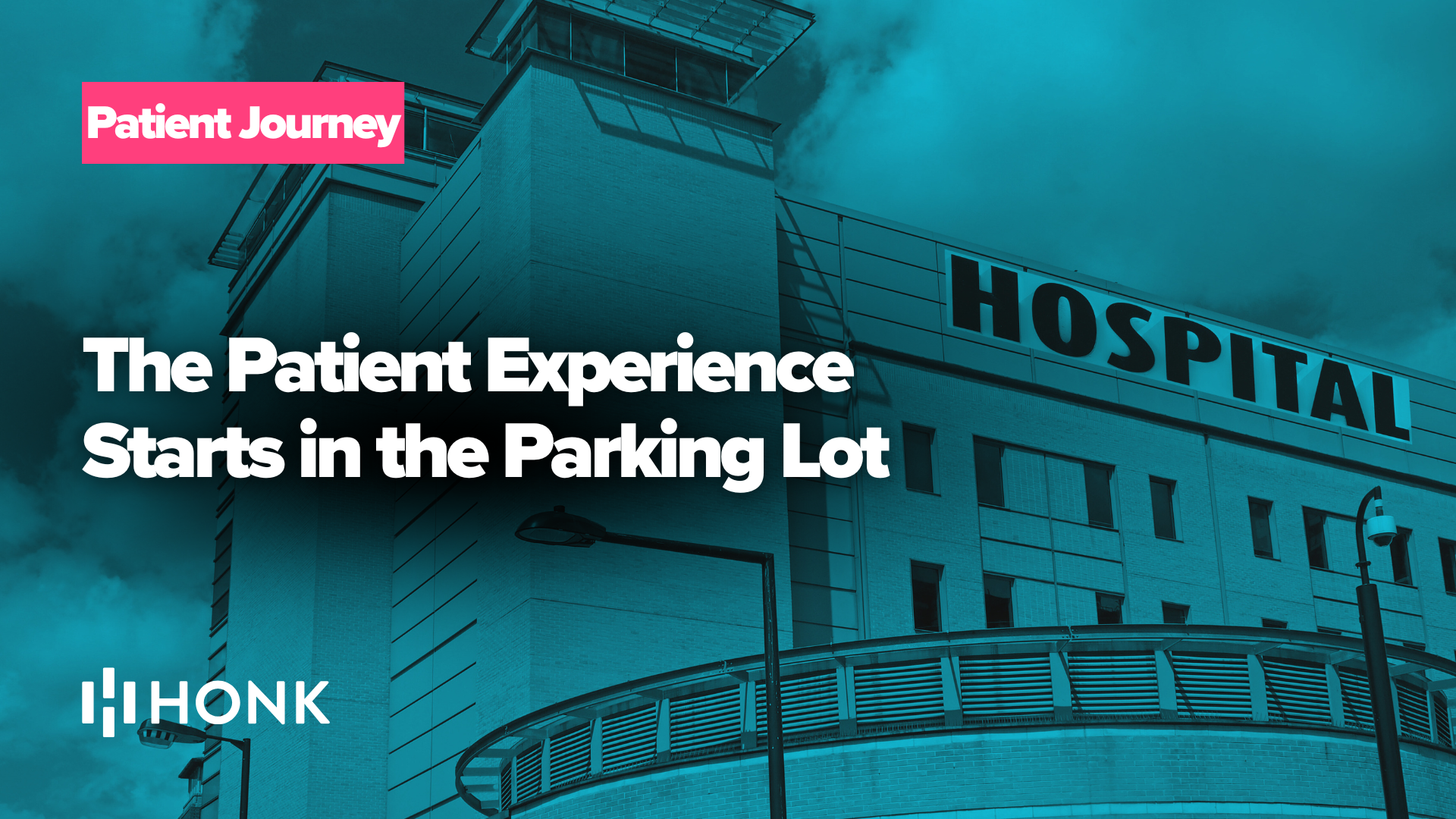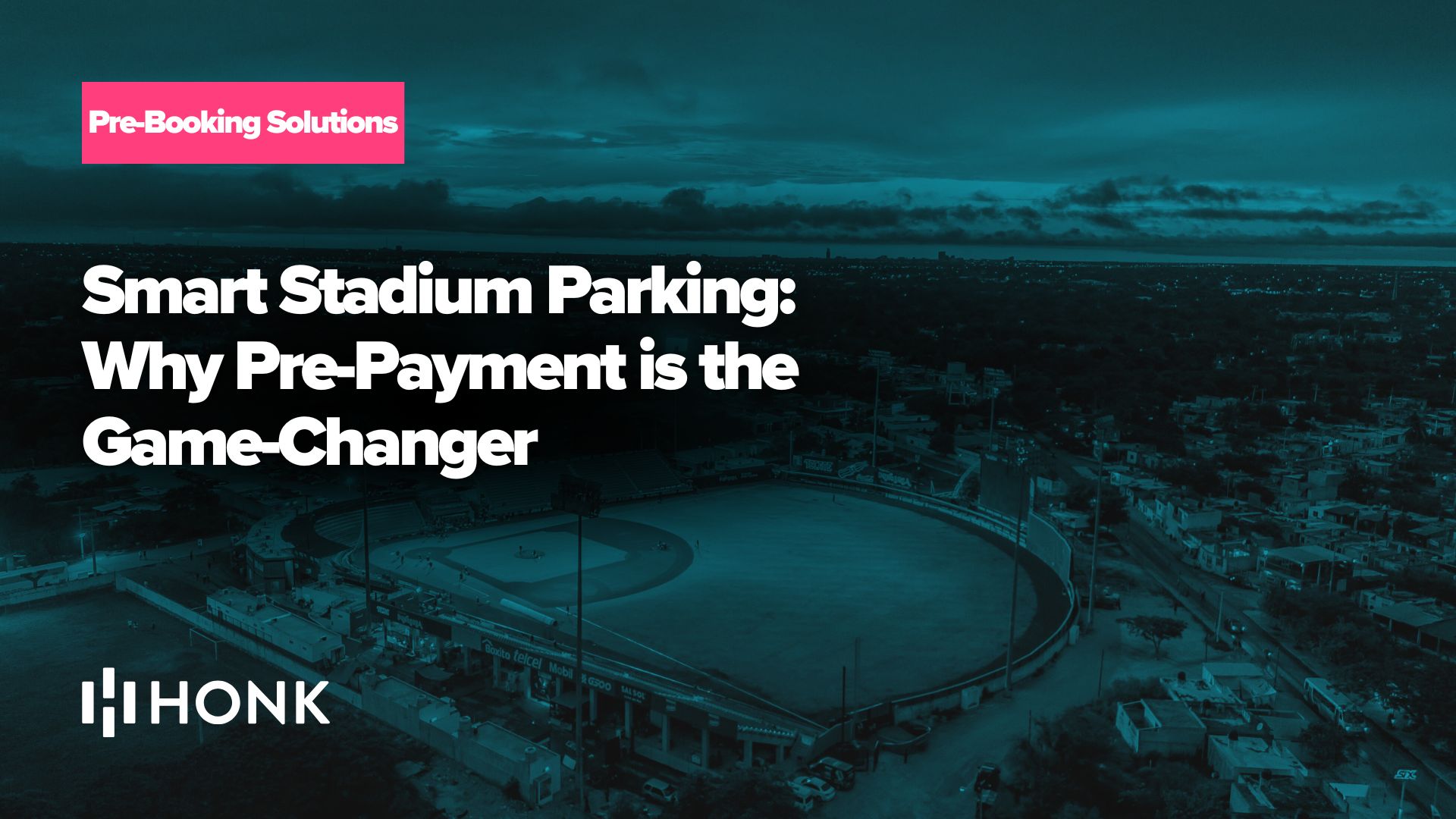Across North America, government facilities are modernizing their operations—and parking is no exception. From city halls and courthouses to transit hubs and public buildings, municipalities are shifting away from coin meters and outdated kiosks toward fully digital, cashless parking solutions. The reason is clear: cashless systems streamline operations, reduce costs, and deliver the speed and convenience that modern drivers expect.
Adopting mobile-first, contactless payment tools like HONK helps government agencies improve compliance, reduce congestion, and eliminate the costs and risks associated with handling cash. With flexible payment options, digital permits, and real-time enforcement, HONK’s platform is helping government parking operations become more efficient, secure, and sustainable.
Why Government Facilities Are Going Cashless
Government-operated parking facilities—like municipal lots, administrative buildings, and transit hubs—often face unique challenges. These include aging infrastructure, tight budgets, high traffic volume, and increasing public expectations for a fast, frictionless experience. Cashless parking addresses these pain points directly.
1. Lower Operational Costs
Handling cash is expensive. Cities must collect, count, and secure physical payments—a process that requires dedicated staff, armored transport, and costly maintenance of pay stations and meters. Transitioning to digital payments eliminates these expenses. Operators can cut labor and maintenance costs while reducing the risk of vandalism and theft.
Cashless systems also remove the need for physical permits and validation stickers. With digital permits, administrators can issue and manage parking credentials entirely online.
2. Increased Compliance and Revenue
Government facilities often struggle with parking violations and lost revenue from non-payment. With cashless systems like HONK’s tap-to-pay and QR code signage, drivers can pay in seconds—without needing to download an app or find a kiosk.
By making payments easier, more intuitive, and more accessible, compliance improves—and so does revenue. Operators using HONK regularly report increased transaction volume and better enforcement coverage thanks to integrated license plate recognition (LPR) and cloud-based session tracking.
3. Enhanced Security
Cash-based systems are vulnerable. Coin boxes can be broken into, meters vandalized, and staff put at risk handling physical currency. HONK eliminates these risks by offering secure mobile and contactless payment options. No cash on site means no risk of theft—and no downtime due to vandalism.
From a public safety perspective, eliminating high-contact payment machines also reduces the spread of germs and improves overall hygiene.
4. Smarter Enforcement
With HONK’s Control Center, cities gain access to real-time data and digital enforcement tools. Staff can instantly verify if a vehicle has paid by checking the license plate against the system, eliminating the need for physical receipts or dashboard permits.
This improves the accuracy of enforcement and eliminates unnecessary citations, reducing public complaints while ensuring higher compliance.
5. A Better Driver Experience
Most people don’t carry coins anymore—and no one enjoys waiting in line at a pay station. HONK lets drivers skip the machine altogether. They can pay with a quick QR scan or tap, enter their license plate, and go. The entire transaction takes less than 15 seconds.
HONK also offers a full-featured mobile app where parkers can manage their sessions, receive expiry reminders, and top up remotely—ideal for longer visits or unpredictable schedules.
HONK in Action: Government Case Studies
HONK is already helping government facilities modernize their parking operations across Canada and the U.S. Here are a few examples:
City of Kingston, Ontario
The City of Kingston expanded HONK’s QR code and app-based payments to on-street parking locations, providing residents and visitors with a flexible, fast way to pay. As Parking Services Manager Laird Leggo noted, “The expansion of Honk allows for more flexibility, improving the parking experience while offering a quick and secure way to manage their parking.”
With both app-based and app-free options, Kingston eliminated the need for many physical kiosks, reduced operational costs, and made parking easier across downtown zones.
Township of Ramara, Ontario
Looking to manage waterfront park access and seasonal congestion, the Township of Ramara implemented HONK’s tap-to-pay system. Local residents received digital permits, while visitors could pay by scanning a QR code or tapping their smartphone at signs posted in each lot.
The result? A fully touchless, scalable system that allowed real-time enforcement through license plate tracking. As Mayor Basil Clarke stated, the HONK platform “enabled us to quickly pivot our parking operation and provide everyone with a safe and contactless way to park.”
Broader Government Adoption
Across the U.S., municipal and county governments are turning to HONK for seamless, low-cost parking modernization. From transit park-and-ride lots to downtown administration centers, HONK helps agencies:
- Replace expensive kiosk infrastructure with durable signage
- Issue and manage long-term digital permits
- Improve revenue accountability
- Optimize rates and usage with real-time data
Because HONK’s solutions are fully cloud-based, they’re easy to deploy. There’s no need for costly hardware installs, and signage can be placed wherever needed—even in remote or temporary lots.
Supporting Smart City Goals
As governments embrace smart city strategies, cashless parking is a natural fit. HONK integrates with existing municipal software systems and mobility platforms, helping cities make better use of curbside space while gathering data that supports planning, sustainability, and traffic reduction.
Real-time analytics help agencies monitor occupancy and adjust pricing dynamically to influence demand—reducing congestion and improving access to key services. And because transactions are digital, they support cleaner audits and better transparency.
Why It Matters Now
As cities and counties rebuild after the pandemic and adapt to new commuter patterns, parking must evolve too. Constituents demand speed, safety, and simplicity—and governments must find cost-effective ways to deliver it.
Cashless parking powered by HONK is a proven way to meet those needs. With minimal infrastructure and fast deployment, agencies can future-proof their parking operations while cutting costs and improving the public experience.
Ready to Go Cashless?
Whether you’re overseeing a city hall lot, a regional courthouse, or a public transit facility, HONK offers a modern parking solution tailored to government needs. With mobile payments, app-free options, digital permits, and real-time enforcement, HONK helps operators eliminate friction and optimize performance.

